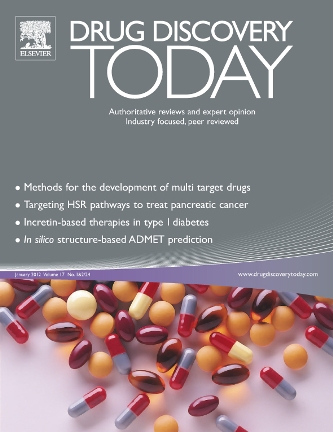共价配体效率。
IF 7.5
2区 医学
Q1 PHARMACOLOGY & PHARMACY
引用次数: 0
摘要
配体效率(Ligand efficiency, LE)表示配体与靶蛋白的结合亲和力。虽然这一概念在非共价配体中得到了很好的确立,但将其推广到不可逆的共价配体中并不简单。在这里,我们分析了非共价和共价对亲和力的贡献,并提出了一个新的度量,称为共价LE (CLE),它包括亲和力和反应性信息。CLE最初是针对半胱氨酸靶向配体定义的,其公式包括针对目标蛋白的IC50和对谷胱甘肽(GSH)的反应速率常数。对比分析了6500多种半胱氨酸靶向共价配体的CLE和LE。我们发现CLE可以扩展到针对非半胱氨酸残基的配体,通过调整相应的替代物的反应性贡献。本文章由计算机程序翻译,如有差异,请以英文原文为准。
Covalent ligand efficiency
Ligand efficiency (LE) expresses the binding affinity of the ligand to its protein target normalized by ligand size. Although the concept is well established for noncovalent ligands, its extension to irreversible covalent ligands is not straightforward. Here, we analyze noncovalent and covalent contributions to the affinity and propose a new metric, named covalent ligand efficiency (CLE), which comprises affinity and reactivity information. CLE is originally defined for cysteine targeting ligands and its formula includes IC50 against the target protein and reactivity rate constant toward glutathione (GSH). CLE and LE were comparatively analyzed for over 6500 cysteine-targeting covalent ligands. CLE can be extended to ligands targeting noncysteine residues by adjusting the reactivity contribution to the corresponding surrogate.
求助全文
通过发布文献求助,成功后即可免费获取论文全文。
去求助
来源期刊

Drug Discovery Today
医学-药学
CiteScore
14.80
自引率
2.70%
发文量
293
审稿时长
6 months
期刊介绍:
Drug Discovery Today delivers informed and highly current reviews for the discovery community. The magazine addresses not only the rapid scientific developments in drug discovery associated technologies but also the management, commercial and regulatory issues that increasingly play a part in how R&D is planned, structured and executed.
Features include comment by international experts, news and analysis of important developments, reviews of key scientific and strategic issues, overviews of recent progress in specific therapeutic areas and conference reports.
 求助内容:
求助内容: 应助结果提醒方式:
应助结果提醒方式:


